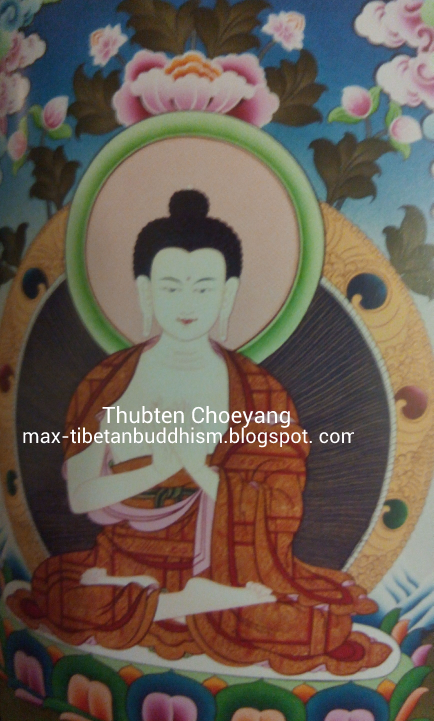Nagarjuna Bodhisattva - 龍樹菩薩
As one of the six great commentators on the Buddha's teaching. He born in South India
from 150 CE to 250 CE and is revered by all Buddhist schools. His teachings are
the basis of the "Madhyamaka school" of Mahayana
Buddhism.
Madhyamaka school in Chinese is known as the (中觀派) the middle way philosophy of
emptiness. Nagarjuna he is also credited with developing the
philosophy of the Prajnaparamita sutra(般若波羅蜜多) to the human realm from the Naga world.
Madhyamaka - In explaining the philosophy of Madhyamika, Nagarjuna presented four positions he would not take:-
All things (dharmas) exist; affirmation of being, negation of nonbeing.All things do not exst; affirmation of nonbeing, negation of being.All things both exist and do not exist; both affirmation and negation.All things neither exist or do not exist; neither affirmation nor negation.
The Nagarjuna holy statue photos were taken by me when I was in the Samye Ling Monastery in Scotland UK in December 2012.
Nagarjuna Bodhisattva he is counted among the 84 great mahasiddhas of India. His
famous writings include the "Precious
Garden
His
commentaries were renowned for their ability to convey outer, inner and secret
levels of meaning, corresponding to the three turnings of the Wheel of Dharma
and his main disciple was Aryadeva.
According
to a 4th or 5th-century biography translated by Kumarajiva that Nagarjuna was
born in a Brahmin family and later became a Buddhist.
Some sources claim
that Nagarjuna lived on the mountain
of Sriparvata
With your continuing support to read my blog , it helps to spread the Dharma knowledge and as well turning the Dharma wheel to the world.
Dedication of merits
As one of the six great commentators on the Buddha's teaching. He born in
Madhyamaka school in Chinese is known as the (中觀派) the middle way philosophy of emptiness. Nagarjuna he is also credited with developing the philosophy of the Prajnaparamita sutra(般若波羅蜜多) to the human realm from the Naga world.
Madhyamaka - In explaining the philosophy of Madhyamika, Nagarjuna presented four positions he would not take:-
All things (dharmas) exist; affirmation of being, negation of nonbeing.All things do not exst; affirmation of nonbeing, negation of being.All things both exist and do not exist; both affirmation and negation.All things neither exist or do not exist; neither affirmation nor negation.
Some sources claim that Nagarjuna lived on the
With your continuing support to read my blog , it helps to spread the Dharma knowledge and as well turning the Dharma wheel to the world.
Dedication of merits
May those who read
and sharing of this blog's information be peaceful and joyful. May the Buddha
Dharma be flourished and the merits will be dedicated to the sentient beings















